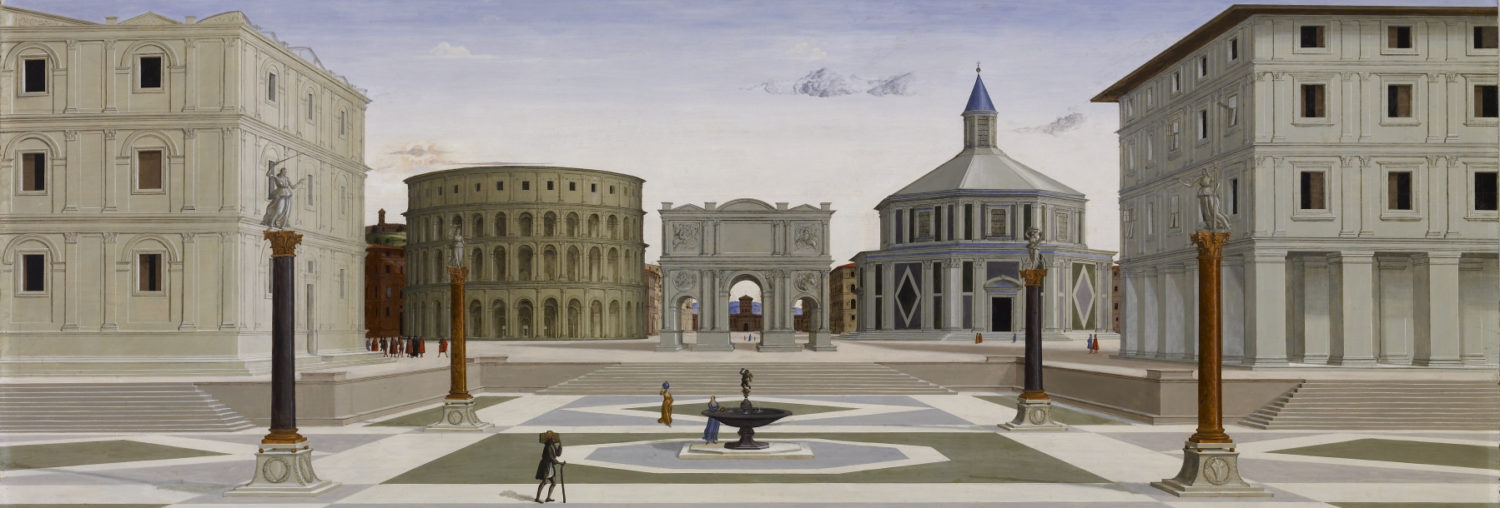CORUÑA (J. Cordine & J. Ximeno, 1792)
In this image called Bahía de La coruña by José Cordine and J. Ximeno (1792), we can see a fragment of the city of A Coruña in the XVIII century, where they appear the coast, the port, the Tower or Lighthouse of Hercules, the castle of San Antón and a settlement next to the coast. The historical origin of this city is dated in 1208, when Alfonso IX, king of Galicia and Leon, decided to build a new town near the lighthouse tower, for the usefulness of his kingdom. All the elements are strategically organized along the edges of the coast. Both sides we can appreciate castles or fortresses that serve for the protection of the city, placed in the centre.
Talking about the city, we can clearly see that it is preindustrial one with an irregular layout, and is divided into two different parts. The first one is the nucleus of the city, where houses are grouped irregularly and surely there are historical elements like a central square. The other part is situated along the coast and consists of the houses of the merchants or fishermen. In this case, the functions of the city determine its morphology and structure, considering that the seaside zone function was commercial and fishing, and that the function of the urban area was more related to residence and defense.
The coast and the port are two very important elements in the image since they represent the main form of commerce of the city in the time, maritime trade. The good Atlantic position of A Coruña favoured that it was an important commercial port that served as a stopover in the route from the Mediterranean to the North Sea. In the 15th century, the port of Cruña become the first port of Galicia, one of the most importants of Spain, and one of the main commercial ports in Europe; and its brand-new lighthouse was its international symbol of prosperity.
On the other side, there is the Tower of Hércules, previously called Farum Brigantium. Up to the Middle Ages, the city of Brigantium (whose name phonetically evolved from Brigantium to Breganzo and then to the medieval Betanzos) was the commercial and political capital of his territory, and the Farum Brigantium was the tower that watched and guided navigation at the entrance of its estuary. There are two versions about the origin of the Tower. The first is that of the Greco-Roman origin, which tells the story of Hercules as winner of Geryon (Gerión) whom he buries and over his head, so that his victory is remembered, he built the Tower. The second version is that of Phoenician origin, which defends Celtic culture and the legend of Breogán. The historians of this group admit that the present Tower is Roman, but that previously existed in that place another tower of Phoenician origin like guide or lighthouse (which appears in the legend of Breogán), and the Romans seeing its function, copied the idea and built the Tower that we still have today. Throughout the medieval period the main role of the Tower was to serve as a watchtower and stronghold at the same time. Its possibilities of point of observation and its defensive capacities could have turned it into a wanted good before the frequent incursions by sea, in spite of its semi-ruinous state. The city of A Coruña chose as a symbol of the city this Tower, that rises in front of the sea to more than 30 meters of height.
Finally, it appears the Castle of San Antón, which is located at the entrance of the port of A Coruña, which is today the Paseo de O Parrote. In the 16th century it worked as a fortress to protect the city from the English invasions. Since 1949 it is a Historical Artistic Monument thant was declared a Well of Cultural Interest in 1994. Its origin goes back to the sixteenth century and has been changing and adapting to the passage of the centuries passing for being fortress and prison, until becoming 1968 in Archaeological and Historical Museum of the city of A Coruña.
Alba Gallo Gijón

